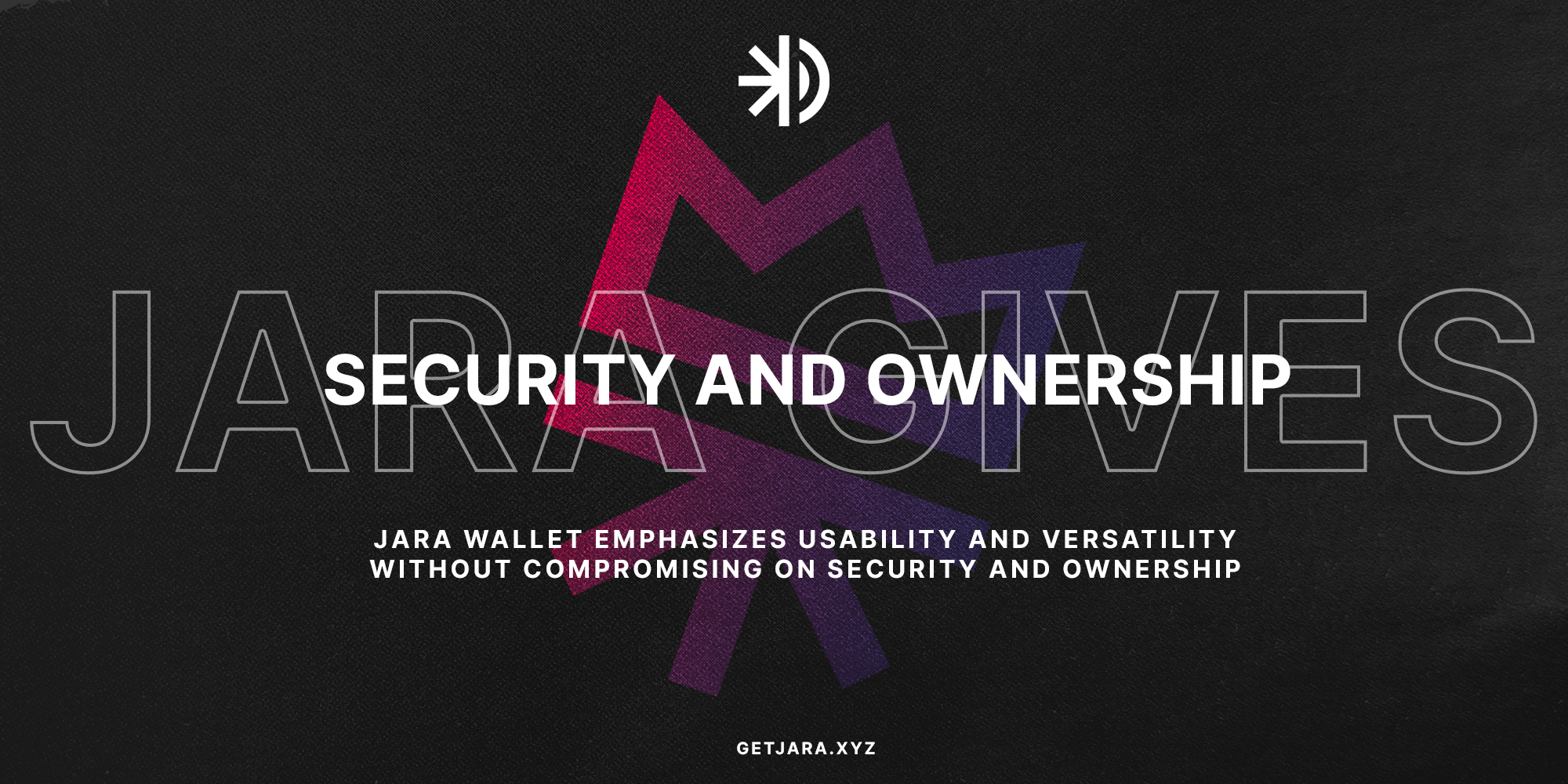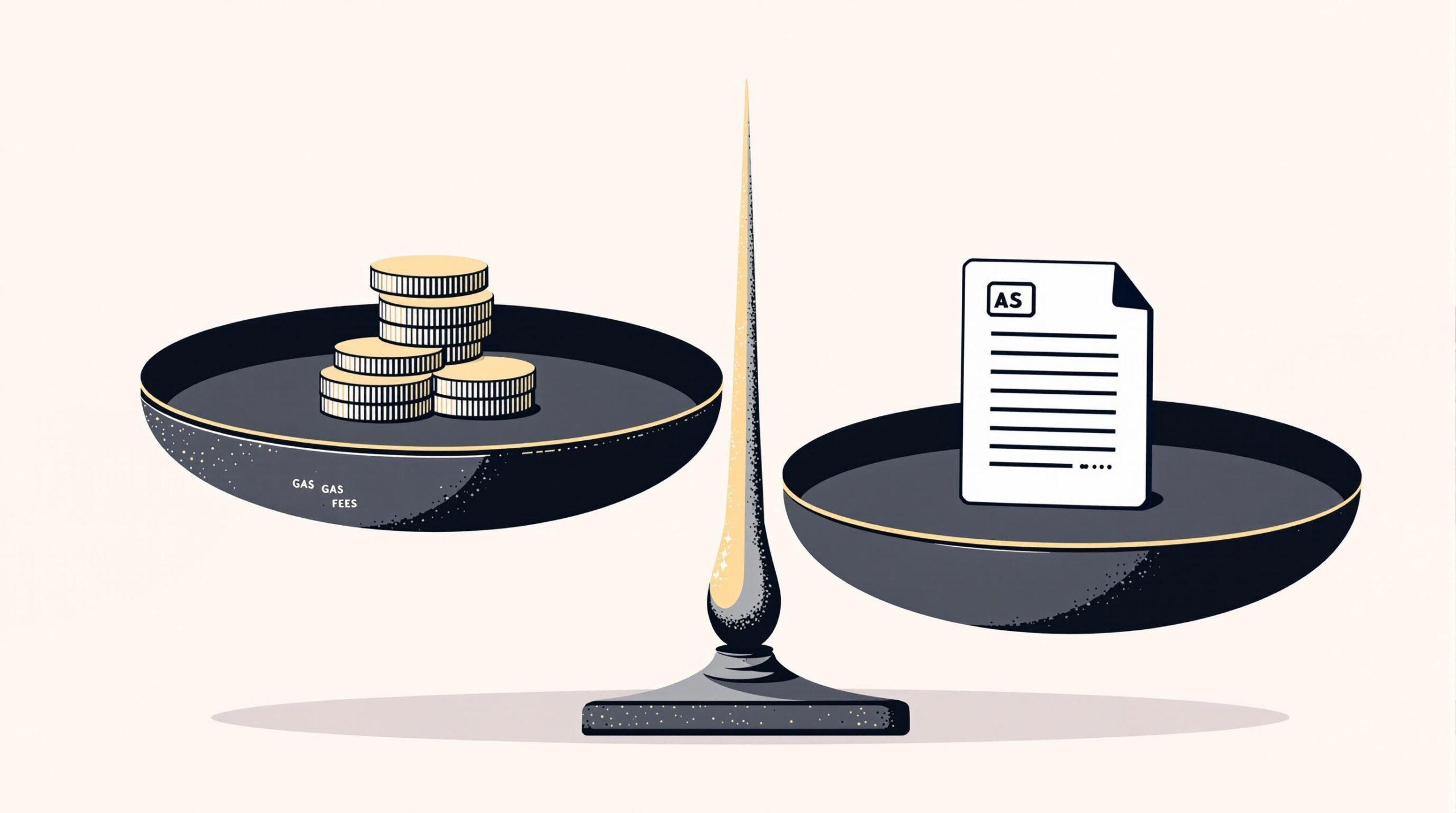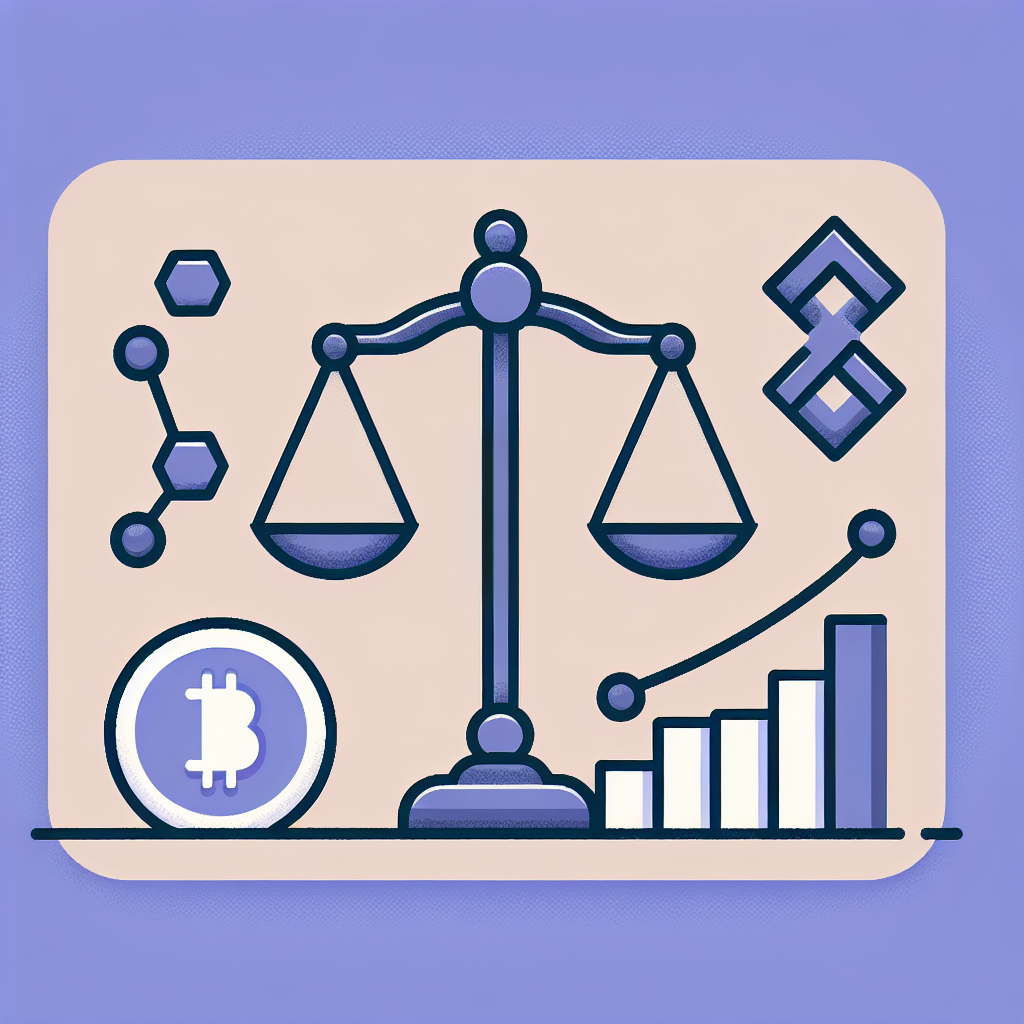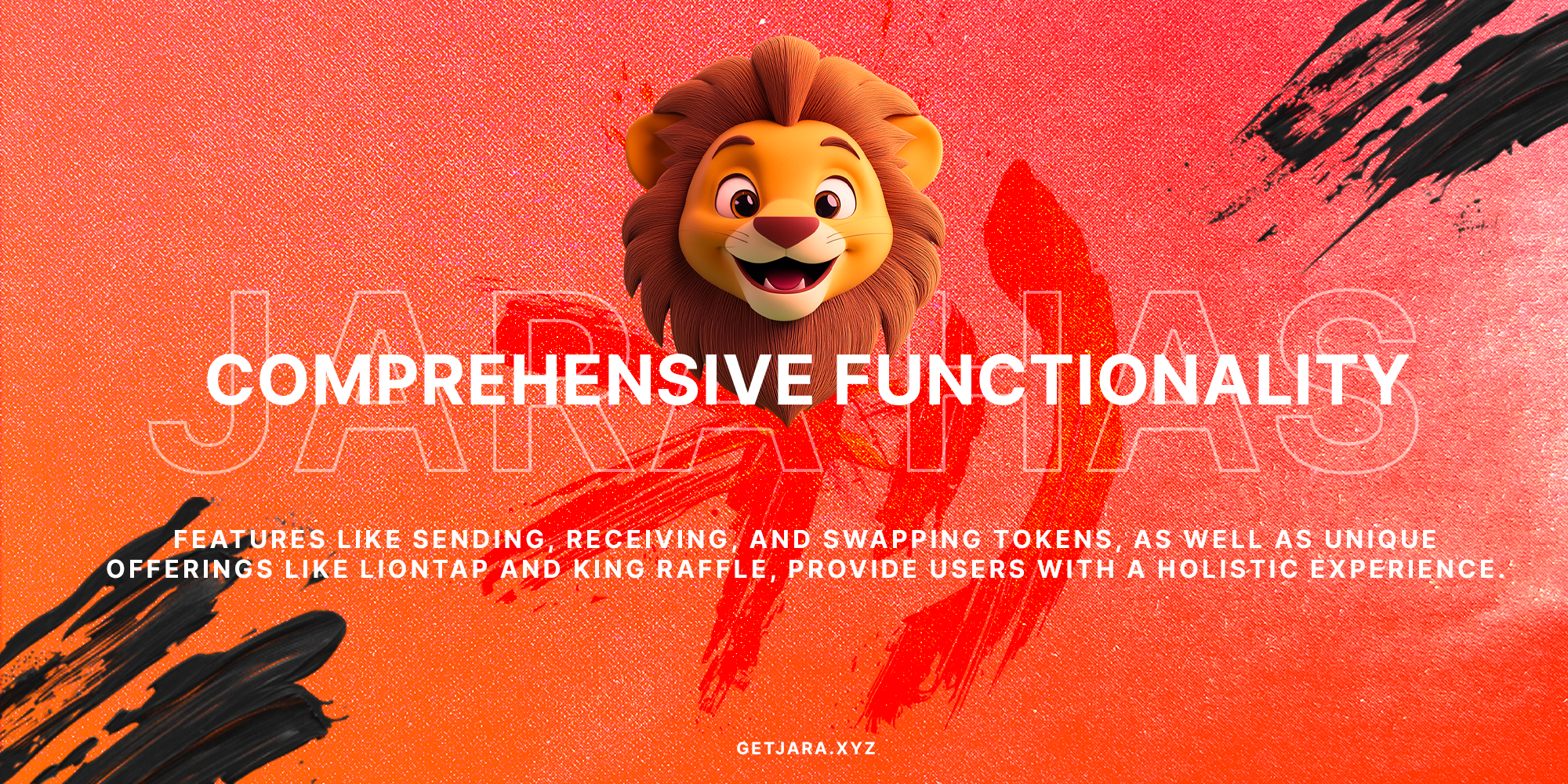Understanding Gas Fees and Their Importance
Gas fees are essential costs associated with processing transactions on the Ethereum blockchain. They are utilized to compensate validators and ensure network security, preventing spam and malicious activities. By understanding the mechanics of gas fees, blockchain users can make informed decisions to optimize their interactions.
But what exactly are gas fees, and why do they matter so much? Let’s break it down in simpler terms.
What are gas fees? Gas fees are payments made by users to compensate Ethereum network validators for the computational energy required to process and validate transactions.
Gas fees are denominated in Gwei, a smaller unit of the cryptocurrency Ether (ETH). The idea is similar to refueling your car: just as you need gas to travel from one place to another, transactions on the blockchain require a ‘fuel’ in the form of gas fees.
The Role of Gas Fees in Blockchain
On the Ethereum blockchain, every transaction or operation requires a certain amount of computational effort. Validators, who are akin to the network’s guardians, need to execute these computations to process a transaction.
- Regulation of Network Activity: Gas fees serve as a regulator of network transactions, keeping the system efficient by ensuring that only valuable transactions are processed.
- Security: They act as a defense mechanism against spam and malicious activities that could clog the blockchain.
- Economic Incentive for Validators: Fees provide financial rewards to validators, motivating them to maintain the integrity and efficiency of the network.
During periods of high network activity, such as a spike in NFT releases or popular DeFi applications, gas fees can soar. This can be daunting, especially for those engaging in smaller transactions, making it important to understand how to manage these costs.
Reducing Gas Fees: A Necessity for Broader Adoption
The rising gas fees, particularly during peak times, have been a barrier to entry for many who wish to leverage blockchain technology for everyday use. Small investors and everyday users often find themselves priced out of the market during these periods due to exorbitant transaction costs.
Efforts such as Ethereum’s recent upgrades aim to address this by improving network efficiency and reducing costs. However, users can still take proactive steps, such as utilizing smart contracts for automating transactions at a lower cost. This approach not only encourages broader participation but also sustains the network’s growth and inclusivity.
“By harnessing innovations like $JARA, Africa’s untapped digital potential can be unlocked, providing cost-effective solutions with enhanced access and security.”
Impact of Gas Fees on Smart Contracts
Smart contracts, the self-executing agreements on the blockchain, are subject to gas fees irrelevant of their complexity. While they offer revolutionary automation benefits across various sectors, their adoption can be hampered by the fluctuating gas prices on the Ethereum network.
Imagine you’re a small business owner interested in automating your supply chain processes via smart contracts. High gas fees could turn this economically beneficial tool into a cost-prohibitive venture. Under such circumstances, leveraging other blockchain solutions with lower fees or optimizing transaction timing becomes vital.
- Optimization Techniques: Consider using batch processing to combine multiple operations in a single transaction, thereby reducing individual fee transactions.
- Alternative Networks: Platforms like Binance Smart Chain offer competitively lower fees, making them viable alternatives for running smart contracts.
- Utilizing Layer 2 Solutions: Innovations such as Layer 2 scaling solutions not only reduce costs but also enhance transaction speed and efficiency.
Gas fees are fundamental to the operation and security of the Ethereum blockchain, yet they also pose significant costs that can limit blockchain technology’s accessibility. By understanding and optimizing gas fees, users can make informed decisions that align with their financial and technological goals.
Effective Timing for Transactions
Optimizing Transaction Times
Selecting optimal times to engage with the blockchain can significantly reduce costs. Transactions conducted during off-peak hours generally incur lower gas fees. Tools like GasNow help monitor traffic and price fluctuations, enabling users to pick the most cost-effective moments for their activities.
Understanding Gas Fees
Imagine you’re on a busy highway. During rush hour, everyone wants to get to their destination, causing congestion. Gas fees work similarly in the Ethereum network. The busier the network, the higher the fees you pay. But what exactly are gas fees?
Gas fees are charges paid to compensate miners for using the computational power needed to validate transactions on a blockchain network.
They protect the network from spam attacks and ensure security by incentivizing miners to process transactions.
Off-Peak Strategy
Timing is everything, especially in the blockchain world. Ethereum gas fees are like bidding in an auction. When demands peak, so do the prices. By aiming to transact during low congestion times, like late evenings or weekends, you can significantly cut down your expenses. Why pay a premium when you can enjoy the discount ride? Using tools like the GasNow ensures you’re always one step ahead in your timing.
Using Specialized Tools
Success in reducing gas fees also comes with knowing the right tools to use. Embracing technology like the Etherscan Gas Tracker keeps you updated on real-time transactions, advising you on the best times for your dealings. These tools provide accurate estimates that help in avoiding unnecessary costs and keep your smart contract interactions efficient and affordable.
Batching Transactions
Think of Batching as buying in bulk at a wholesale club. The more you group similar transactions together, the less you spend on each individual one. Batching reduces each transaction’s computational load, translating to lower gas fees. This strategy not only saves costs but enhances the efficiency of using smart contracts.
The Jara Advantage
Jara, by leveraging the $JARA token and its associated wallet, opens a whole horizon of cost-efficient transaction options.
$JARA: Empowering Africa’s digital economy with low fees and seamless transactions.
This unique integration ensures that your capital works smarter, not harder, by utilizing our platform’s cutting-edge technology. Whether you’re engaging in smart contracts or managing decentralized finance assets, $JARA optimizes every step of the process.
Diversifying Blockchain Networks
If you’re seeking alternatives due to high fees, consider branching out to different blockchain networks. Platforms like Binance Smart Chain or Polygon offer friendlier fees and competitive speeds. They act as great pivots or expansions, giving you flexibility in managing transaction costs and boosting your interaction efficiency.
“Your Voice, Our Mission” – we champion your rights with the tenacity and dedication that has earned us the trust of our community members.

Leveraging Layer 2 Solutions
Layer 2 solutions are a critical way to reduce transaction costs on the Ethereum network, and their importance cannot be overstated. But what exactly is a Layer 2 solution, and how can it minimize your gas fees?
Layer 2 solutions are secondary frameworks or protocols built on top of existing blockchains (Layer 1) that enhance scalability and efficiency by processing transactions off the main chain.
The high cost of gas fees on Ethereum is often attributed to network congestion, which occurs when there’s more demand for network capacity than what can be handled simultaneously. This is where Layer 2 solutions come in: they offload much of this traffic, making transactions swifter and less costly.
Optimistic Rollups
One popular Layer 2 solution is Optimistic Rollups. These are designed to increase transaction throughput substantially by batching multiple transaction data into a single transaction on the Ethereum mainnet.
- Key Concept: Optimistic Rollups assume transactions are valid by default, hence “optimistic.” Only if a user disputes a transaction does it need to be re-evaluated on Layer 1.
- Gas Savings: By processing transactions in bulk off-chain, Optimistic Rollups significantly minimize gas expenditures, lowering costs for users.
zk-Rollups
Another effective Layer 2 solution is zk-Rollups (zero-knowledge rollups). Unlike Optimistic Rollups, zk-Rollups generate cryptographic proofs for transactions, ensuring they are valid. This reduces unnecessary data being sent to the main Ethereum blockchain.
- Key Concept: Zk-Rollups use advanced cryptographic proofs to confirm transactions are correct without revealing the transaction details.
- Advantages: Greater security and efficiency, as it confirms transactions off-chain and then submits proof to the main blockchain.
Both of these solutions not only lessen gas fees but also enhance the overall efficiency and scalability of the blockchain network. Implementing Layer 2 solutions constitutes a strategic move for those looking to reduce costs in the African digital asset space, particularly as platforms like Jara dive deeper into developing these frameworks within their ecosystems.
The Role of Jara in Layer 2 Integration
At Jara, the focus is on integrating Layer 2 solutions into its ecosystem to bridge global capital to African assets. This involves leveraging proprietary L2 blockchain solutions to minimize fees and enhance transaction speed, playing a pivotal role in Africa’s emerging digital economy.
What does this mean for investors? By using Jara’s Layer 2 solutions, transaction costs are significantly reduced, allowing for more efficient participation in tokenized infrastructure projects across Africa.
As a result, users can enjoy a seamless experience while engaging with Jara’s multifaceted platform, from tokenization of projects such as the Lagos airport to utilizing decentralized finance tools that integrate socially with the WhatsApp generation.
“Jara: Unlocking the Future to Africa’s Crypto Ecosystem,” ensuring that reduced costs drive greater access and participation in the burgeoning digital asset market.
In conclusion, leveraging Layer 2 solutions is not merely about cutting transaction costs. It’s a forward-thinking approach that aligns with Jara’s mission to fuel Africa’s $200B+ digital asset economy. With strategic partnerships and a robust proprietary blockchain framework, Jara empowers users to navigate the complexities of blockchain transactions with confidence and efficiency.
Strategies for Minimizing Gas Consumption
For everyone using the blockchain, reducing gas fees is not just about saving money; it’s about making digital interactions more accessible. But what are gas fees, and how can you minimize their impact? In simple terms, gas fees are the costs associated with performing operations on blockchain networks, such as Ethereum. These fees are crucial for compensating miners and ensuring network security. However, they’re often a concern for users who want to carry out transactions efficiently and affordably.
What are gas fees? Gas fees are charges for executing operations on a blockchain network, paid in the network’s cryptocurrency to validators for processing the transactions and maintaining network integrity.
Efficient Use of Gas Tokens
Gas tokens can be a powerful tool in managing your transaction costs. They allow users to pre-purchase gas when prices are low, which can then be used when gas prices spike, thus avoiding high fees during traffic peaks. This proactive strategy is not just about saving money but also about planning. If you can anticipate network congestion times, holding gas tokens can significantly reduce your overall transaction costs.
- Timing is Everything: Purchase gas tokens during low-cost periods and use them strategically during peak times.
- Leverage Technology: Platforms like Jara offer insights into optimizing gas token usage, providing strategic advantages in volatile markets.
- Stay Informed: Regularly check tools like ETH Gas Station to monitor price changes and make informed decisions.
Transaction Batching
Batching multiple operations into a single transaction is pivotal for cost reduction. By combining several actions such as transfers or contract executions into one, you can decrease the total gas required, making operations more efficient. This approach is especially valuable for businesses conducting high volumes of similar transactions.
- Batch vs. Individual Transactions: Combining operations reduces average costs per transaction.
- Applicable for Routine Tasks: Ideal for repeated transfers or executing multiple contracts at once.
- Smart Contract Optimization: Ensure smart contracts are designed to support batching operations efficiently.
How does transaction batching reduce fees? Batching combines multiple operations, decreasing the cumulative gas consumption, thus lowering overall costs.
Pre-Purchasing Gas During Low-Price Periods
This strategy requires a bit of foresight. By acquiring gas during off-peak or low-demand times, you can lock in lower rates, effectively reducing costs when the network becomes congested. Platforms that provide insights into historical data, like Bitcoin Taxes, can be invaluable in planning your purchases.
- Market Analysis: Use past data and trends to anticipate price drops.
- Strategic Purchases: Commit to buying gas only during identified low-cost periods.
- Use of Tools: Enhance decision-making with gas price tracking applications.
“Jara – Unlocking the Future to Africa’s Crypto Ecosystem.”
Overall, reducing gas fees involves a combination of strategic planning and the use of technological tools to navigate the digital landscape efficiently. The goal is to make blockchain transactions not just possible, but manageable for everyday users. By employing these strategies, you’re not just saving costs; you’re actively participating in a future where digital transactions are within everyone’s reach.
For more strategies on automation and blockchain efficiency, explore how smart contracts play a pivotal role in automation, offering a trustless and reliable means of executing agreements without third-party interference.

Why are gas fees necessary for smart contracts?
Gas fees are necessary for smart contracts because they serve as a mechanism to compensate validators and ensure the secure processing of transactions on the Ethereum blockchain. These fees prevent spam and malicious activities by attributing a cost to actions taken on the network, thereby keeping the blockchain efficient and reliable.
What strategies can I use to reduce gas fees?
There are several strategies one can use to reduce gas fees, such as:
- Selecting Optimal Times: Conduct transactions during off-peak hours when traffic and fees are lower.
- Utilizing Layer 2 Solutions: These allow transactions to occur off the main network, reducing fees significantly.
- Batch Transactions: Group multiple transactions into one to conserve resources and lower costs.
How does leveraging Layer 2 solutions affect gas fees?
Leveraging Layer 2 solutions affects gas fees by offloading transactions from the main Ethereum network and handling them separately. This decreases congestion and thus reduces the gas fees required, making blockchain interactions more affordable and scalable.
Are there legal implications of using smart contracts with reduced gas fees?
Yes, there are legal implications when using smart contracts with reduced gas fees. It’s critical to ensure that cost-saving measures do not compromise the enforceability of a contract or violate any regulatory requirements. Consulting a legal expert can provide guidance on maintaining compliance while optimizing gas costs.

Related Practice Areas
Explore additional related topics that delve deeper into the realm of smart contracts and blockchain technology.
Read Our Reviews
At the forefront of our Smart Contracts & Automation practice is a deep-seated commitment to client satisfaction. Each case is handled with utmost care, as echoed in the appreciative feedback from those we represent. You can read more 5-star reviews here: Leppard Law Reviews.

Your Path to Cost-Efficiency with Smart Contracts
In the world of smart contracts, reducing gas fees is crucial for optimizing blockchain efficiency. At Jara, we understand the intricacies of gas fees and their impact on your blockchain transactions. Our team is dedicated to empowering you with strategies that lower costs while maintaining the integrity and security of your transactions.
Streamline your blockchain operations with practices that cut unnecessary costs and enhance efficiency.
Are you ready to transform your approach and embrace cost-effective blockchain solutions? Reach out to us at [email protected] and let our experienced team guide you through leveraging smart contracts to their fullest potential.
Discover the features of the Jara Android App or the Jara iPhone App today, and bridge global capital to African assets with ease.
Gas Fees and Smart Contracts: How to Reduce Costs
When dealing with smart contracts, understanding gas fees is crucial. These costs can vary greatly, so finding ways to minimize them is essential for maximizing profitability and efficiency.
Understanding Gas Fees
Gas fees are the transaction costs required to perform operations on the Ethereum blockchain. These fees are measured in gwei, a denomination of the cryptocurrency ether.
- Key Concept: Gas fees are used to compensate miners for the computational power required to process and validate transactions.
Factors Influencing Gas Fees
Numerous factors can influence the cost of gas fees:
- Network Demand: Higher demand on the network increases gas prices.
- Complexity of Contracts: More complex smart contracts require more computational power, raising fees.
- Transaction Speed: Faster transactions incur higher fees.
“Reducing gas fees is not just an option—it’s a necessity for optimizing blockchain efficiency.”
Strategies to Reduce Gas Fees
There are several strategies to help reduce gas fees effectively:
- Key Concept: Optimize contract code to minimize unnecessary computations.
- Adjust Gas Limits: Set appropriate gas limits to avoid high fees.
- Choose Off-Peak Times: Conduct transactions during periods of low network activity.
Future Outlook on Gas Fee Reduction
The Ethereum community is continually working on innovations to reduce gas fees, such as the implementation of Ethereum 2.0.

















